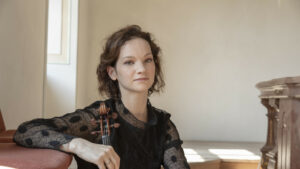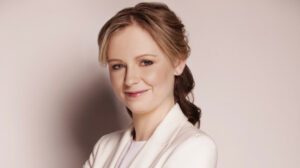Legacy – The New Zealand Symphony Orchestra
Stephen de Pledge (Piano)
Alexander Shelley (Conductor)
Gillian Whitehead retrieving the fragility of peace
Mozart Piano Concerto No, 20 in D Minor, K466
Brahms Symphony No, 1 in C Minor Op. 68
Michael Fowler Centre, Wellington
Saturday 1 October 2022
This was a concert that spanned almost two and a half centuries, from Gillian Whitehead’s work commissioned by the NZSO and receiving its first performance during this series of concerts, through Mozart’s most popular piano concerto written in 1785, and culminating with Brahms’ First S ymphony of 1876. I found it a collection of works that asked questions about the nature of music, and what this music meant to people of their time and also to audiences at present.
Gillian Whitehead retrieving the fragility of peace
Gillian Whitehead is one of the doyens of New Zealand composers. Over her long and distinguished career she has drawn on the European Modernist tradition, but she has also mined her Maori heritage. Three years ago the NZSO commissioned her to write a piece, Turanga Nui, commemorating Cook’s landing on these shores in 1769. Now, a new work, Retrieving the fragility of peace, commissioned by the NZSO for this tour, uses a similar soundscape, using the resources of a large orchestra to capture the sounds of the forest, its bird songs, and perhaps the thumping rhythms that suggest haka, war dance.
Forget conventions such as extended melodies and themes – this piece is about the basic ingredients of music, sound, tones, beat and silences. It challenges the listener, steeped in a European classical musical tradition to sit up and listen. There are instrumental interludes of sheer beauty – an extended cor anglais solo, for example, and a cello solo – flute, winds, brass and a wide range of percussion and string sounds add colour, but significantly, it is silences that define the piece. It ends in silence, a pause over a few bars, a few seconds. The war dance resolves into peace. It has a distinctive beauty of its own.
Mozart Piano Concerto No, 20 in D Minor, K466
Over a period of two years Mozart wrote 11 concertos, most for his series of subscription concerts in Vienna, making use of the new developments of the piano. Of these, only two are in a minor key, D Minor K466, No. 20 and C Minor K491, No. 24, written in the following year. The D Minor concerto was, and probably still is, the most popular of Mozart’s concertos, foreshadowing the later romantic concertos of Beethoven and other composers. It starts with a haunting phrase repeated, calling to mind the final scene of Don Giovanni, an opera that was written two years later.
The soloist who was expected to play at this concert was the Venezuelan pianist, Gabriela Montero, but in the event she was unavailable, isolating after contracting Covid. At short notice the Auckland pianist, Stephen de Pledge was called upon to replace her. In no way did this seem to disadvantage Wellington. Stephen de Pledge played at a relaxed, expansive tempo which let the music breath. The dramatic first movement was followed by a lyrical extended song of the second movement that his sensitive playing did justice to. The unhurried last movement was a fitting climax to the concert, its dark shadow already there in Mozart’s imagination. A notable feature of this performance was de Pledge’s use of additional ornamentation, which seemed very appropriate to the piece. He also improvised his own cadenzas, with echoes of Mozart’s operas and even of Beethoven, who wrote a cadenza that is widely used. The orchestra supported the soloist with precise yet sensitive responses. For an encore de Pledge played Schumann’s Traumerei, a very personal, romantic reading of which Schumann would have approved.
Brahms Symphony No, 1 in C Minor Op. 68
Brahms had written a number of large scale orchestral works before writing his first symphony. The shadow of Beethoven loomed large and he had to write something that followed Beethoven’s tradition, yet was different and uniquely his. This symphony is, like the Mozart Concerto, in a minor key. Brahms had a grand vision, a work with a confluence, a mosaic, of short themes that developed into overarching subjects to fill out symphonic sonata form. His musical language was that of the North German choral tradition. The coalescence of these themes created a rich many-layered sound, and in a less clearly-focused performance these individual themes could have got lost, overwhelmed by the main theme, – however, the mark of this performance was that every little nuance came through clearly, the competing themes carefully balanced. The first movement is a dialogue between an overtly military theme and a tranquil subject. The second movement is an extended chorale embellished by a beautiful flute solo, then a plaintive melody played by the strings. This movement is one of the most exquisite pieces of music in the symphonic repertoire. The third movement has the feel of a dark German song on which the rest of the movement elaborates. It is all a long way from the cheerful, lighthearted third movements, Minuet and Trios, of earlier symphonies. The final movement is the conclusion, the summation of the previous movements. The horns, winds, call to mind the Wagnerian sound. Then the Allegro con brio introduces the triumphal final theme, a theme that brings to mind Beethoven’s Ninth. And there, in the horns, there is a synergy with the trumpet calls of Gillian Whitehead’s piece that the concert started with.
It was a beautiful, clear, measured performance. If there were some slight inaccuracies that some picked up, these were completely lost amid the overpowering beautiful playing. The audience responded with a spontaneous ovation that you seldom hear at the end of the symphony. There was a general sense of elation, with people walking out at the end of the concert on a high, with the music ringing in their ears.

